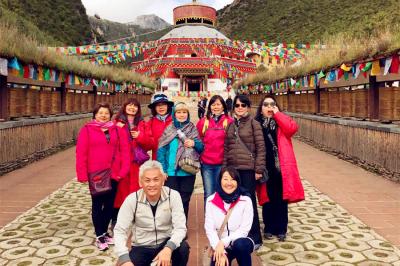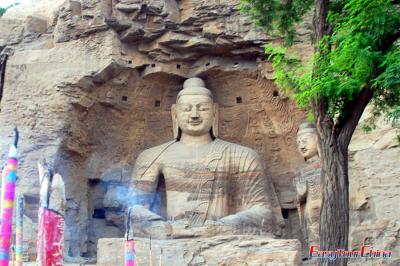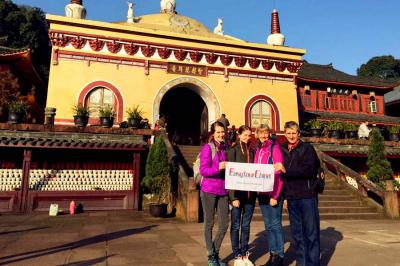Qiao Family Compound
The Qiao Family Courtyard is another masterpiece of traditional civil architecture in North China. It lies at Qiaojiapu Village, 54 km south of Taiyuan. It was the residential house of the well-know financier Qiao Zhiyong of Qing Dynasty, also called Zai Zhong Tang. First built in the period of Qianlong Emperor of Qing Dynasty, renovated and expanded later, this compound has been turned into a magnificent complex with the unique character of traditional architecture.
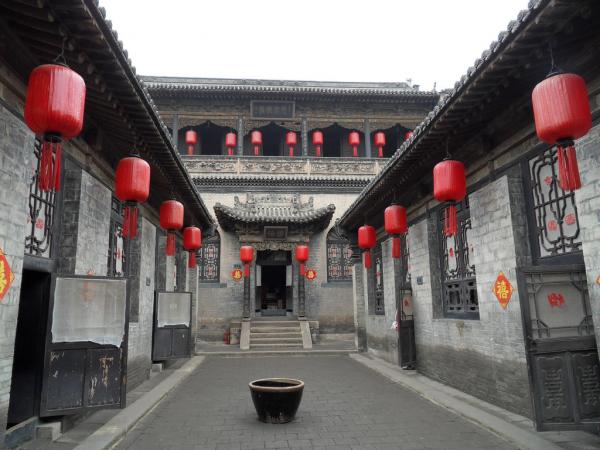 Qiao Family Compound encompasses 8,724.8 square meters of land, consisting of 6 large yards and 20 small yards with 313 houses in total. It was repaired and rebuilt many times during the reigns of emperors Tongzhi and Guangxu in the Qing Dynasty and the beginning years of the Republic of China (1911-1949). It was an old Chinese residential courtyard that thrived for over two centuries. When you look down at the overall yard above ground, it looks just like"喜喜" (double happiness in Chinese).
Qiao Family Compound encompasses 8,724.8 square meters of land, consisting of 6 large yards and 20 small yards with 313 houses in total. It was repaired and rebuilt many times during the reigns of emperors Tongzhi and Guangxu in the Qing Dynasty and the beginning years of the Republic of China (1911-1949). It was an old Chinese residential courtyard that thrived for over two centuries. When you look down at the overall yard above ground, it looks just like"喜喜" (double happiness in Chinese).
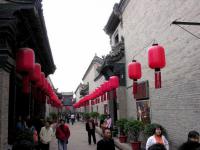 Entering into the gate of the courtyard, first, you can see an 80-meter-long straight stone pavement that divides 6 courtyards into a northern and southern row. There are slope protections between the pavements and nearby walls.
Entering into the gate of the courtyard, first, you can see an 80-meter-long straight stone pavement that divides 6 courtyards into a northern and southern row. There are slope protections between the pavements and nearby walls.
The Qiao family's ancestral temple is at the end of the western side, which directly faces the gate. There are 4 main buildings and 6 other structures, such as a gate pavilion and the Geng and Tiao pavilions. The sidewalks on the roof of every yard are connected to allow for patrol.
Viewed from outside, the residency is serious and grand, with long yards; viewed from inside, it is splendid and orderly, reflecting the residential style of big families in feudal society in North China.
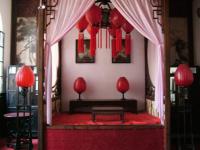 The courtyard's three sides face the street, while the courtyard itself is completely surrounded by a 10-meter-high sealed water-milled brick wall. Yards and houses are linked with other yards and houses while the sidewalks above row upon row of roofs - such as the Xuanshan, Xieshan, Yingshan, Juanpeng, and Horizon roofs -- link up the battlements.
The courtyard's three sides face the street, while the courtyard itself is completely surrounded by a 10-meter-high sealed water-milled brick wall. Yards and houses are linked with other yards and houses while the sidewalks above row upon row of roofs - such as the Xuanshan, Xieshan, Yingshan, Juanpeng, and Horizon roofs -- link up the battlements.
Yards contain smaller yards as well as gardens. The doors, windows, eaves, stone stairs, quadrangular railings, and the Chuanxin, Pianxin, and Jiaodao yard are all beautifully shaped. You can see brick carvings everywhere in the yards: backbone carving, wall carving, and railing carving, all of which are based on figures, allusions, flowers and plants, birds, beast, chess, and painting and calligraphy. The carving designs are so exquisite and their workmanship, so fine, fully showing the special style of residential building in the Qing Dynasty.
In 1990, this ancient mansion became more famous all over China and abroad thanks to the movie "Raise the Red Lantern" by the director Zhang Yimou. After the filming was finished, the drama production team left behind several hundred red lanterns. Since then, these lanterns have been the most important decoration both in the Qiao Family Grand Courtyard and other jin shang courtyards.
In 1986, the Qi County government rebuilt the courtyard into the Qi County Folk Museum that features art, science, and other things of interest. It contains 42 exhibition rooms displaying a wide range of material covering subject areas such as years, time, season, food, clothing, shelter and transportation, wedding and funeral ceremonies, and agriculture trade activities. In total, approximately 2,000 pieces of exhibits reflect the folktale custom in the Shanxi Jinzhong area.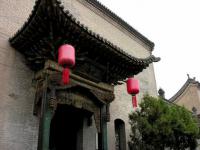
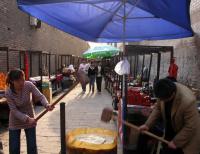
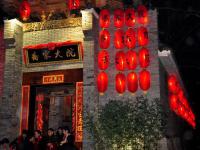
More Attractions in Pingyao
